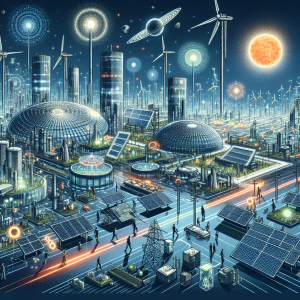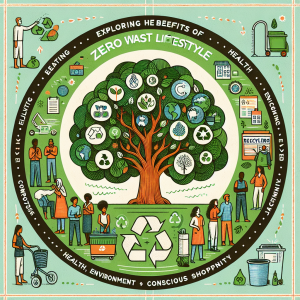The rise of renewable energy marks one of the most significant shifts in global energy production. As concerns about climate change, environmental degradation, and depleting natural resources escalate, governments, industries, and communities are pivoting increasingly towards sustainable sources of energy. Solar power, wind energy, hydropower, and biomass are leading this transformation. These energy sources promise not only to mitigate environmental impacts but also to promote economic growth and enhance energy security.
Solar energy has gained tremendous traction over the past decade. Photovoltaic (PV) technology, which converts sunlight directly into electricity, has experienced rapid advancements and cost reductions. Solar panel efficiency has increased significantly while production and installation costs have plunged, making solar energy more accessible than ever before. Countries like China, the United States, and India are investing heavily in solar infrastructure. In addition, community solar projects and residential rooftop installations have democratized access to solar energy, allowing individuals to partake in this clean energy revolution.
Wind energy is another pillar of the renewable sector. Technological advancements have led to the development of larger and more efficient turbines capable of generating electricity even at low wind speeds. Offshore wind farms, particularly in Europe and parts of Asia, are contributing significantly to national grids. Countries such as Denmark, Germany, and the United Kingdom lead the charge, showcasing that regions with rich wind resources can transition most of their energy needs to wind power. There is also growing investment in wind energy research and development, which aims to enhance turbine technology and expand wind farm capabilities.
Hydropower remains the largest source of renewable electricity globally. By harnessing the energy of flowing water through dams and river systems, hydropower offers a steady and reliable energy output. It also provides additional benefits such as water management, flood control, and irrigation. However, environmental concerns about ecosystem disruption and displacement have led to increased scrutiny. Despite these challenges, countries like Brazil, Canada, and Norway leverage their vast river networks to generate substantial portions of their national energy requirements from hydropower.
Biomass energy, derived from organic materials such as plant and animal waste, forms a vital component of the renewable energy mix. It offers the dual benefits of waste management and energy production. Biomass can be converted into bioenergy through various processes, including combustion, gasification, and anaerobic digestion, making it a versatile energy source. While biomass plays a crucial role in reducing dependency on fossil fuels, it must be managed sustainably to ensure that food security and deforestation concerns are not exacerbated. Innovations in algae-based biofuels and second-generation biofuels are paving the way for more efficient and sustainable biomass energy solutions.
Energy storage solutions such as battery technology are critical to the viability of renewable energy. Since solar and wind energy are intermittent, efficient storage systems are essential to balance supply and demand. Lithium-ion batteries have become the industry standard, though research into alternative solutions like solid-state batteries and energy storage from hydrogen is underway. Energy storage systems help stabilize the grid, manage peak loads, and ensure reliability, making renewables a more dependable energy option.
Policy frameworks and government incentives are driving the adoption of renewable energy. Legislation mandating renewable energy targets, subsidies, tax breaks, and investment in research and development play pivotal roles in encouraging deployment. The European Union has committed to becoming the first climate-neutral continent by 2050, with renewable energy earmarked as a central strategy. Similarly, many countries worldwide have signed international accords like the Paris Agreement, pledging to transition to sustainable energy systems in the coming decades.
Public perception and societal attitudes toward renewable energy sources are evolving positively. As awareness of the environmental issues associated with fossil fuel consumption grows, communities and organizations are more inclined to adopt renewable energy. Renewable energy projects often create jobs, stimulate local economies, and provide opportunities for community-led initiatives. The rise of green finance, such as green bonds and sustainable investments, supports projects that prioritize ecological benefits alongside economic returns.
Technological innovation plays a critical role in the continued growth of renewable energy. Advances in smart grids, artificial intelligence, and the Internet of Things (IoT) offer new ways to optimize energy production and consumption. These technologies enable real-time monitoring and management of energy resources, improving energy efficiency and reducing waste. Furthermore, the integration of renewables with electrified transportation systems, such as electric vehicles and electric public transport, exemplifies the synergies between sustainable technologies.
While the renewable energy sector faces challenges such as technological limitations, financial barriers, and regulatory hurdles, the benefits far outweigh the obstacles. Decentralized energy systems, where energy is generated closer to the point of use, present opportunities for developing regions to leapfrog traditional infrastructure. Investment in grid modernization, supportive policy environments, and international cooperation will be crucial in overcoming these challenges and ensuring a smooth transition to a sustainable energy future.
The rise of renewable energy represents not only an environmental imperative but also a socio-economic opportunity. By embracing renewable energy technologies and their ancillary advancements, societies can pave the way toward a cleaner, more resilient, and inclusive future. The ongoing commitment to research and development, coupled with a collective drive towards sustainability, will determine the pace and scale of this energy transformation. As renewable energy sources continue to gain prominence, the prospects of a sustainable and energized world become increasingly tangible.



